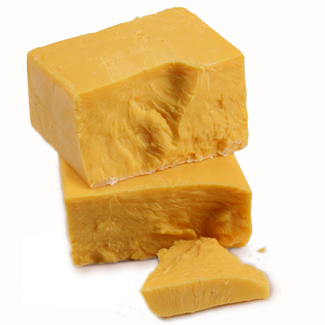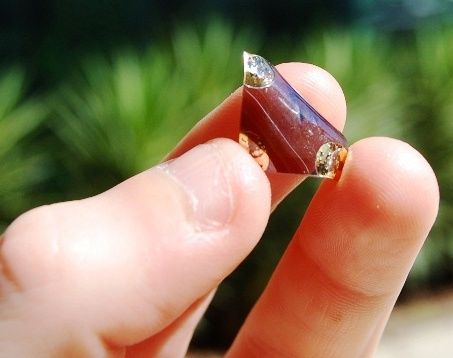Alert! New Plastics Capable of Conducting Electricity
Image courtesy www.samcooks.com
Australian researchers at the University of Queensland and UNSW School of Physics have managed to manufacture cheap, strong, flexible and conductive plastic films by placing a thin film of metal onto a plastic sheet and mixing it into the polymer surface with an ion beam. “Ion beam techniques are widely used in the microelectronics industry to tailor the conductivity of semiconductors such as silicon, but attempts to adapt this process to plastic films have been made since the 1980s with only limited success – until now” (Beale). The ion beam allows the researchers to tune the properties of the plastic film, meaning that they can control with an astonishing degree of precision the film’s ability to conduct or resist the flow of electric current.
Sample of the conducting film. (Photo: Adam Micolich)
The researchers found they could vary the electrical resistivity over 10 orders of magnitude, meaning that there are around ten billion options to adjust the recipe when making the plastic film. In theory, they could make plastics that conduct no electricity at all, plastics that conduct as well as metals do, as well as everything in between (Beale). The plastic films can even act as superconductors and pass current without resistance if they are cooled to a low temperature.
To take conductive plastic films from the lab to a potential commercial application, the team produced “electrical resistance thermometers that meet industrial standards. Tested against an industry standard platinum resistance thermometer, it had comparable or even superior accuracy” (Beale). The new films can be produced using equipment common to the microelectronics industry, and can tolerate more exposure to oxygen than standard semiconducting polymers.
The material completely fascinates me because it starts with all the desirable aspects of polymers (mechanical flexibility, robustness and low cost) and then adds good electrical conductivity, which is a property not normally associated with plastics. Ion beam processed polymer films could have a fantastic future in the on-going development of soft materials for plastic electronics applications, fusing current and next generation technology.
I have filed conductive plastic films under wood and under fire.
Cited:
Beale, Bob. “New Plastics can Conduct Electricity” Physorg.com 02/22/11. Accessed 02/22/11. URL.


















Leave a Wordpress Comment: